Part 4: Mythology Dissection 1

Shinshu Field Characters
Ok! We haven’t had one of these in awhile. Let’s get started.
First up, Sleepy the Bear- We found Sleepy perched on the growth sphere in Hana Valley. This is a regular thing with him. According to my research, Sleepy is based on Totoro, the title character from the Studio Ghibli film My Neighbor Totoro.
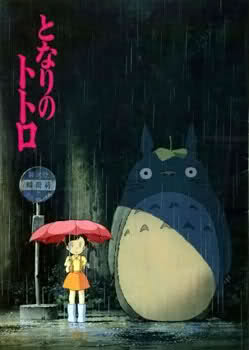
This explains the leaf on Sleepy’s head, and his coloration, which is similar to Totoro's. The film also features spherical “dust spirits,” and Totoro himself is rather rotund. This might account for Sleepy’s affinity for round objects. In Japanese, Sleepy is called Nemuri, which means sleep. Creative.

Next, The Nameless Man. He’s an artist communing with nature (a potter, to be exact- he owns the kilns across the river). According to Pesky Splinter, The Nameless Man is probably based on “The Man with No Name.” This is an archetypical sort of character who appears in Akira Kurosawa's Yojimbo, and in Sergio Leone's A Fistful of Dollars, an unofficial remake of Yojimbo as a Spaghetti Western. Clint Eastwood played the nameless character in said remake (and the two sequels). Men with no name are a common stock characters in western films (by western I mean cowboys and such). The archetype was popularized by Mr. Eastwood.
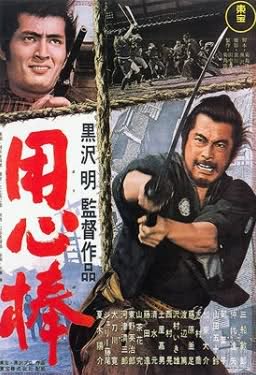
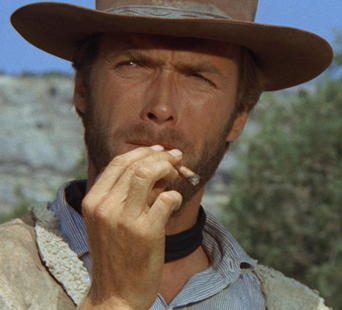
Yojimbo movie poster (left), and Clint Eastwood, a nameless man (right)
The messenger Ida is based on Idaten, a Buddhist saint more commonly known as Skanda. Skanda was the Buddha's right-hand man. When Buddha departed the Earth, he instructed Skanda to keep watch over the Dharma (in essence, the natural order of things). Idaten/Skanda is the guardian of all Buddhist monasteries and of Buddhist teachings.
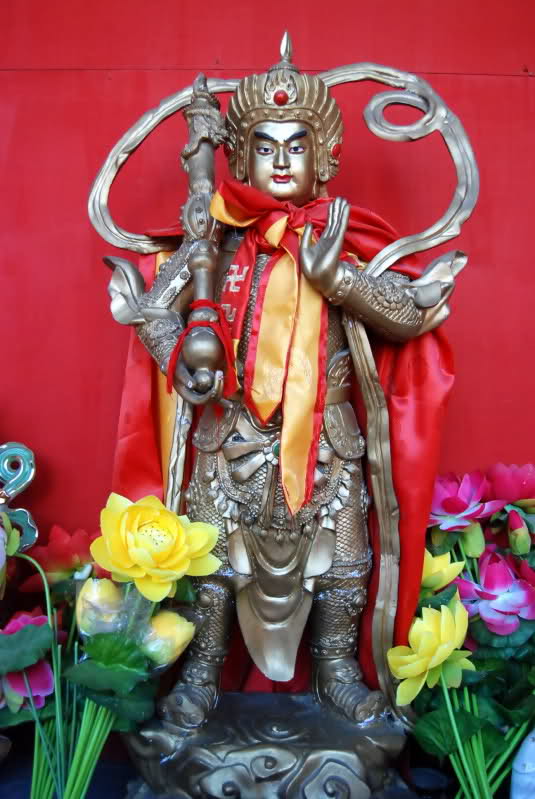
A statue of Skanda at the Miaoying Temple in Beijing.
And we’ve met another Brush God as well:
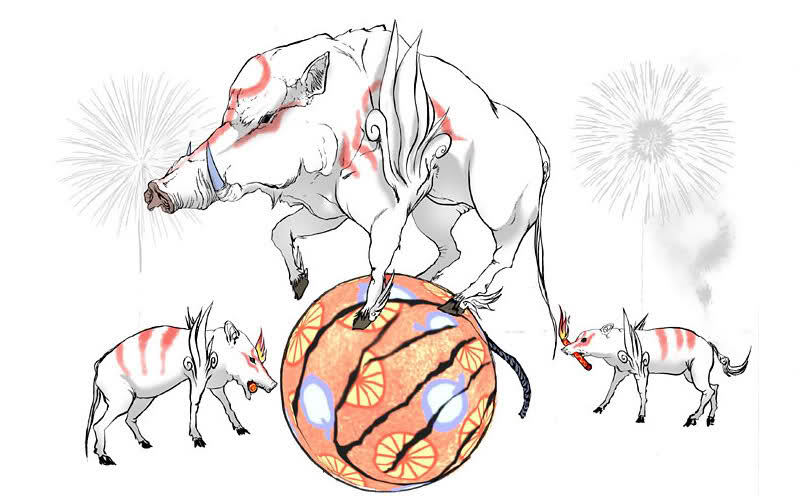
Bakugami- the Boar (or Pig), god of blowing stuff up
 Baku means “to explode.”
Baku means “to explode.”Boar Traits: Honest, gallant, sturdy, sociable, peace-loving, patient, loyal, hard-working, trusting, sincere, calm, understanding, thoughtful, scrupulous, passionate, intelligent. Can be naïve, over-reliant, self-indulgent, gullible, fatalistic, materialistic.
The boar finished last of all. He had gotten hungry during the race. He stopped to eat and had a nap afterwards. As a result, he almost didn’t finish!
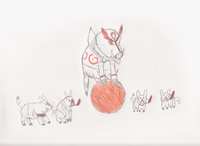 Embugami and Tepig piglets
Embugami and Tepig pigletsMiscellany
All the Brush Gods’ names (save Amaterasu) end in “-gami.” “Gami” is a Romanization of “kami.” A g is used instead of a k because
Tau Wedel posted:
Not quite! The change from kami to gami is a result of a phenomenon in the Japanese language called rendaku, in which the first consonant of the second part of a compound word can change in certain ways. The possible changes are s to z, t to d, k to g, and h to b. This doesn't have to do with ease of pronunciation -- it's just how the language happens to work. In fact, the presence or absence of rendaku is sometimes distinctive. From the words yama "mountain" and kawa "river", you can make the compound yamagawa, meaning "mountain river", but you can also make the compound yamakawa, meaning "mountains and rivers".
There's actually an interesting story about the meaning of the word kami. As you note, it can mean both "god" and "paper", and there are in fact several more meanings. One of these is "upper part". You might reasonably think that the meaning "upper part" is derived from the meaning "god" (or vice versa), since a god might reside in the upper part of the world. But this is wrong! In one of the oldest known ortographic standards for Japanese, the two words differ in the second syllable. This ortography distinguishes two different syllables that later both became mi, and kami as in "god" does not use the same mi as kami as in "upper part". So they are actually unrelated words that came to be pronounced identically due to sound changes. It is not actually known what the difference in pronunciation was, only that there must have been a difference since the ortography so consistently distinguishes the two syllables.
In Japanese, Amaterasu’s nickname is Amako, which derives from her name, plus the ending “-ko,” a diminutive suffix for girls (like –ling or –et in English). Ammy is a close approximation. It’s just meant to sound cute. (Thanks, Waffleman_!)
Tuxedo Ted posted:
I've always wondered if there was a penalty for marking out the wrong name on the hit list. I was always too terrified to find out on purpose, but there were a few times that I nearly did it by accident. Hey, sometimes you just forget game mechanics if you don't see them for a while.
There's no penalty for crossing out the wrong name. In fact, it's impossible to do so. Issun stops you if you try. He also chides you if you botch the job of crossing out the right name. Either way, you just have to try again. I didn't botch any of the name crossings during recording (which is rare, like I say in the video, it can be tricky), but I have done so plenty of times in the past!
Glazius posted:
I like how Ammy's trying to catch the fireworks in her mouth. Please say there's a snow level and she does the same with snowballs.
I can't recall exactly, but I don't think you'll be disappointed.

Centzon Totochtin posted:
I don't know, I really enjoyed Okami, but I don't think that it lends itself too well to sequels, because the story wraps itself up fairly nicely. I would gladly welcome another game with the same art style though, even one with the same in-game universe.
That's the sort of thing I would like to see as well.

Nahxhela posted:
There was a glowing spot in that hay stack next to Tama's house
If there's one skill that's easy to spam and does plenty of damage, it's definitely the cherry bomb. I recall being in harder fights and spamming the cherry bomb worked pretty well.
I'm not done with Shinshu Field yet.

Lots more Cherry Bomb shenanigans in the next video!
